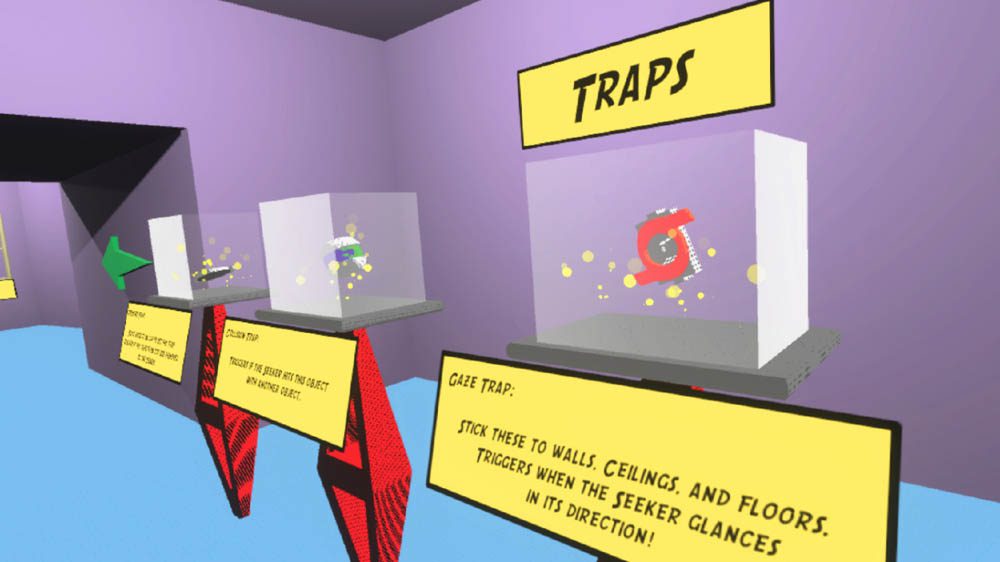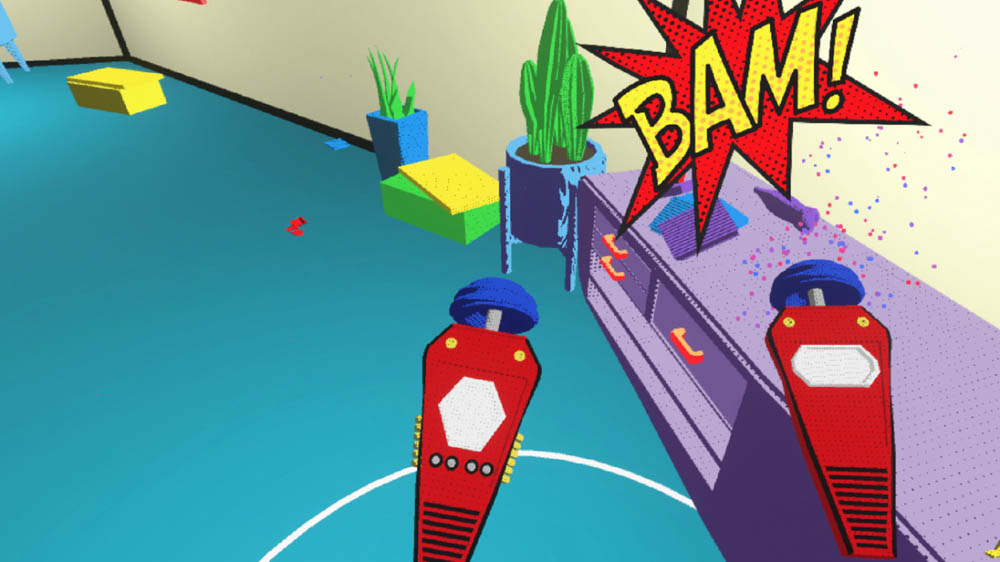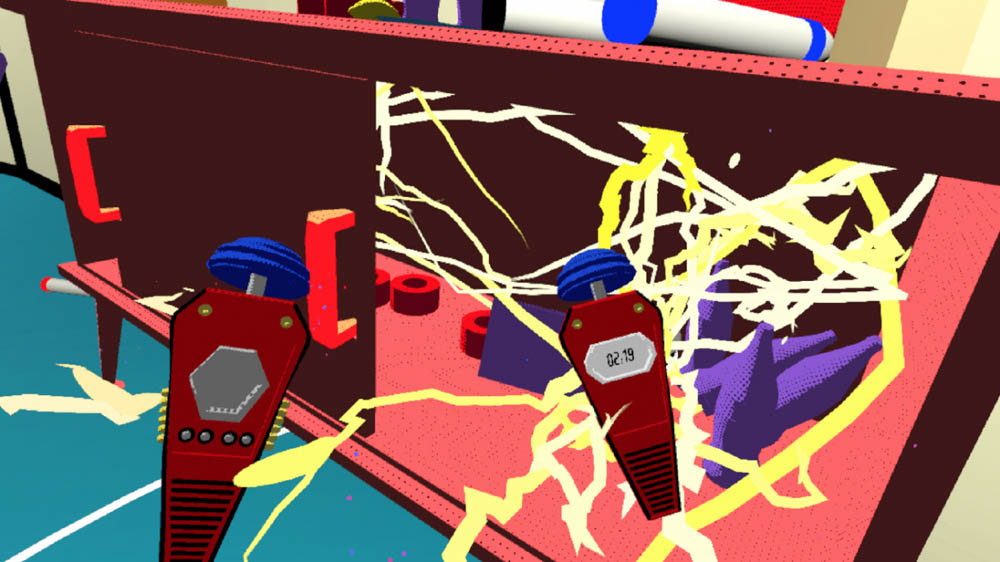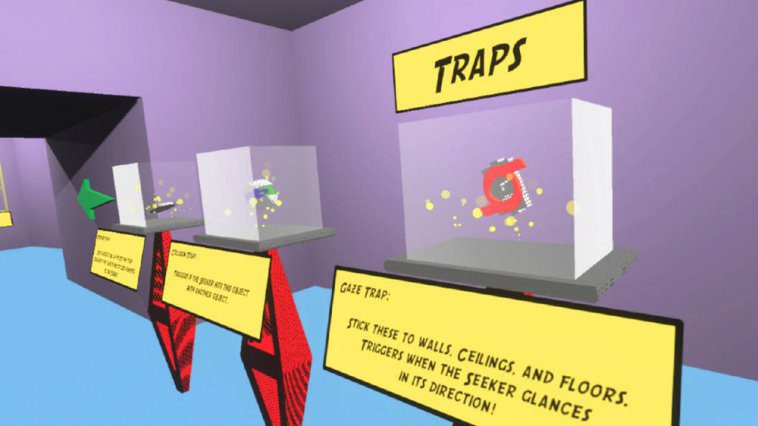Want to make a game? Think it takes an army of programmers, designers and artists? Well, it doesn’t have to – not even in VR. When a couple of guys studying Unity met in class, their interests eventually led to their own studio and their own game – The Take – published here on Viveport.
Curious about how they made their game and almost as much by their company name of Stuido Studios (sic!), Nathan Ortega chatted to Jose Zambrano (3D Art Lead) and Rob Canciello (Lead Producer) about how they got together and what The Take is all about.
Let’s start with the basics. What’s the origin of your team, and the studio – particularly the name?!
Jose: Our studio started when Rob and I met at a ‘Learn Unity in 8 Weeks’ class (which we now teach) about 3 years ago. We both wanted to change our career paths and get into games, but since our resumes would not allow us to go a traditional route, we decided to open and run our own studio.
With my background in business/finance and Rob’s in management the process was much more enjoyable. Although we initially built the company to boost our own portfolios and move forward in the industry, we are now sticking by the company to grow it into something much more than just a game studio.
Originally, our name was Eos Interactive, but upon noticing that it was not great for SEO, we decided to switch our name. “Stuido” was already a running joke between us due to a typo (which I make many of) and we decided for the fun of it to call ourselves “Stuido Studios” after seeing no one had claimed the name online. We feel it accurately represents our culture in the studio of embracing mistakes and moving forward!
Rob: I love these questions already. You had me at the interrobang! Anyways, I did meet Jose in Playcrafting’s course. Our instructor Kurt Bieg, who works at Simple Machine in NYC, encouraged us to not be afraid of code and made it easy to approach.
I sat next to Jose one day and saw that he was making some cool looking stuff. We hit it off and after the class ended, we challenged ourselves to make a game to show at the next Playcrafting event which was about 4-5 weeks away. Though it was held together with some pretty scrappy code, Jose and I were able to divide up the tasks evenly and knock them out together. From there, we kept working on small projects and getting ourselves more involved with the local indie game scene in NYC.

How did your previous experience lead you to explore VR as a development opportunity?
Jose: Aside from our lead developer John Corn who had VR development experience, both Rob and I had just completed our first ‘student’ project, Don’t Look Away, for mobile VR.
Rob: We’d been invited to work on Don’t Look Away by our friend Hessvacio Hassan, who was the lead programmer on the project. That was our first attempt at VR, and it sort of gave us the bug, so to speak.
Jose: It was a great introduction to VR development and made us fall in love with the medium.
The Take has a very distinct look and feel. Tell us how that look came to be.
Rob: Oh man, the art style. It took a little bit of time, and went through three different iterations. At first, it was meant to be somewhat realistic, but then we realized how many games out there were like I Expect You to Die. About halfway through the project, we had a brainstorming meeting where it completely flipped.
Jose: We tried to find something unique, yet inspired by reality, and combine those different inspirations. We aimed for “The Jetsons meets Roy Lichtenstein”, so very pop-art with lots of mid-century modern and atomic age designs.
Rob: Our lead programmer John was obsessed with the idea, and I liked it too, but I wasn’t completely satisfied. When we played with it in Unity, there wasn’t a lot of visual clarity and it just wasn’t as eye catching as I thought it could be.
That’s when I encouraged injecting more color into it, and Jose and I brainstormed for a little while to pull colors and references. We settled on a comic book style based on the Silver/Golden Ages of comics, and we studied the various ways they combined their colors for clarity.
Once we created a palette and applied it to our assets, everything clicked, and that style informed everything else for our visual design: mid-century modern architecture and furniture, comic book effects, halftone patterns, and unbridled atomic-age spy fantasy.

The Take’s ‘escape the room’ style gameplay includes local multiplayer. How did you end up with that?
Jose: As designers, we like to boil everything down to one mechanic and we always think of mechanics first. For The Take, we wanted to really explore the basic mechanic of grabbing and moving your body around in VR. The idea of hiding an object and seeking came naturally after that.
We also love social and multiplayer interactions, which led to the game being local multiplayer as we tried to solve the issue of not many people having VR set ups.
What challenges did the team encounter during the process of developing The Take?
Jose: Our main challenge was getting the teleportation and grabbing to feel right. After that, our biggest challenge was prioritizing features and throwing many other features away due to time constraints. We were pushing to complete The Take in eight months, so choosing what to develop became a daily conversation within the team.
Rob: The Take was our first full-fledged game as a team, so an early challenge was learning how to work with each other for hours on end in a confined space! We started to learn each other’s patterns and behaviors, and though there were a few growing pains, we started to get into a rhythm. Our various jobs and other responsibilities outside of the studio were also a little hard to balance, but we all got the work we needed done, and in the end, that’s what matters the most.
As for VR, designing and testing in VR has challenges. There were many times I just wanted to test something out with a (non-VR) controller, or have the normal comfort of being able to control where the player is (at least most of the time) by using artificial boundaries in the game. Another weird design quirk we hadn’t considered until later was elevation. I love designing levels and environments that play with height. In VR, that’s something that needs to be designed with real care, to avoid motion sickness.
The Take provides a unique take on 1v1 gameplay, as players lay traps and tricks to disrupt their opponent’s progress. Was it difficult balancing the spy v spy dynamic so that it felt frantic yet fair for both players?
Rob: It took a little while to balance the Hider’s experience with that of the Seeker’s. We always knew the Seeker’s turn would be frantic, but bringing that same level of energy and urgency to the Hider required some modifications to the design.
At first, we considered giving the Hider more time, but that felt lazy and made for an inconsistent design. Instead, we opted to have the traps, hidden compartments, and intel randomized so that the Hider was always ‘seeking’ the best traps and hiding spots.
If they took the time to find them, they’d have less time to hide the intel, so that gave a sense of risk/reward which inevitably led to a sense of urgency.
Jose: In the end, we knew all Seekers would share a similar persona, but the Hiders could have very different approaches, so tailoring the Hider experience was the most difficult for us.
We wanted particular feelings for each player – to make them feel like an ‘evil genius’ or ‘trickster’, while still having that feeling of ‘frantic search’ – and that ultimately influenced our music choices.
Rob: We worked closely with our composer Zac Zinger to make sure the tracks always went into a ‘critical’ mode for the last 30 seconds of a match. So even though the Hider’s theme is pretty relaxed and jazzy most of the time, those last 30 seconds will still get your blood pumping.

Were there any surprising design revelations you discovered when observing players of The Take? Did anything you saw change the overall experience?
Rob: Since The Take was our first real dive into VR, we kept learning something new every time we playtested it with people outside of the office.
For instance, if you’re going to make a Hide-and-Seek objects game that’s fun for the whole family, you can’t exactly give users the ability to hide an object super high up on a shelf where their little brother or sister can’t physically reach.
Jose: The VR audience is growing from inexperienced users to adept VR users, and what was acceptable previously to everyone, isn’t always acceptable now. Our teleportation system has been a topic of discussion among avid users who want smooth locomotion. Now it’s becoming a standard to have a range of locomotion options in games, but sadly we did not prepare for that, as we had a goal for this to be an introductory game for VR.
Rob: We learned that these days, anyone developing for VR needs to design a product that can be flexible enough to adjust to a new design scheme, usability trend, or hardware setup that may pop-up halfway through development.
What’s next for Stuido Studios?
Jose: We are doing a lot of work in the education sector in New York. We run several classes on Unity and VR and really love doing so. We are striving to create an environment where people can learn development, enter the market with ease and produce quality product – sort of building the dream company we wish was there when we decided to get into game development.
Aside from that, our next project is a unique MR project, not quite a game but something still interactive. I wish I could share more, but under contract we aren’t allowed to say much more than that.
Rob: I want to bolster our educational efforts while still improving our own skills in all aspects of design and working in Unity. We’re also excited to work with some of our previous students on their own projects, and help them grow as developers. That should help keep our game design gears ticking as we start to develop this MR project. We’ll still be working on games in the background, and when an idea feels right, we’ll pursue it.
Jose, Rob – thank you for talking with us.
The Take is available on Viveport.
Website: LINK


